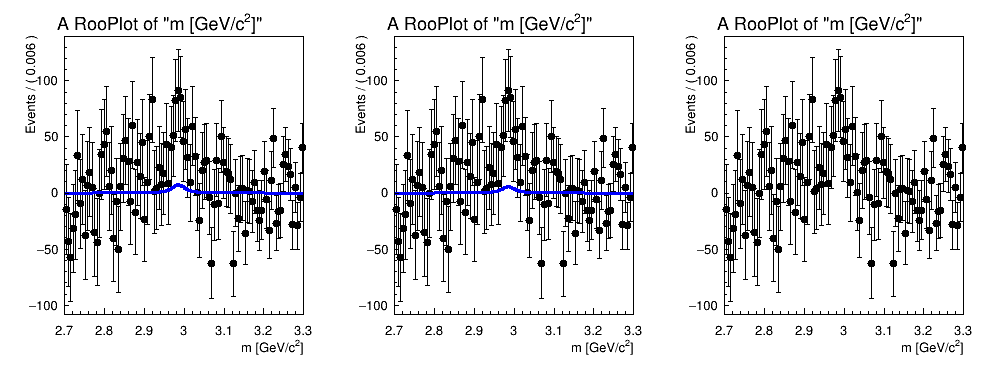Hi,
I have a problem to plot part of a RooSimultaneous on a background subtracted spectrum, the normalization seems to be completely off.
What I did:
a) Fit a RooSimultaneous to a combined RooDataHist (16 datasets in total); fit model consists of a RooVoigtian as signal an RooChebychev as background.
b) I plotted the result projected to one spectrum with (I skipped line style options in the code snippets):
RooPlot *framecomb = x->frame();
// this is the combined dataset
combData.plotOn(framecomb);
// simPdf is the RooSimultaneous
simPdf.plotOn(framecomb, ProjWData(combData), LineColor(kRed));
// comps is a TString holding the 16 names of the background functions, compssig the names of the signal components
simPdf.plotOn(framecomb, ProjWData(combData), Components(comps.Data()), LineColor(kGreen+2));
simPdf.plotOn(framecomb, ProjWData(combData), Components(compssig.Data()), LineColor(kBlue));
The result looks like this:
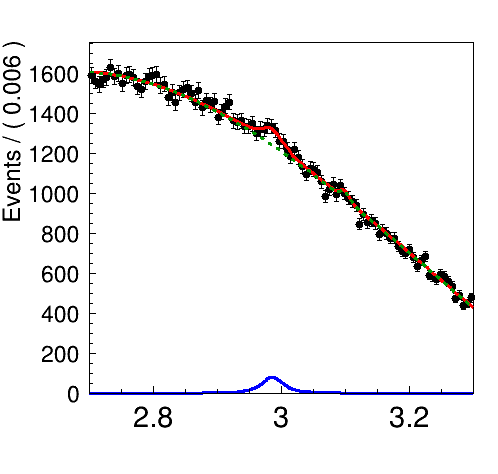
What I want to do:
a) Create and plot a background subtracted spectrum, where the green background is subtracted from the combined RooDataHist combData. I didn’t find any simple solution, so I made some brute-force approach to create the subtracted spectrum:
TH1 *htot = combData.createHistogram("htot",*x,Binning(100,xmin,xmax));
TH1F *hbkg = new TH1F("hbkg","",100,xmin,xmax);
for (int i=1;i<=16;++i)
{
RooRealVar *b = w->var(Form("B%d",i)); // this is the number of background events, w is a RooWorkspace
TH1* htmp = w->pdf(Form("cpol%d",i))->createHistogram("hbkg",*x,Binning(100,xmin,xmax)); //cpol_i are the Chebychev polynomials
htmp->Scale(b->getVal());
hbkg->Add(htmp);
delete htmp;
}
for (int i=0;i<=htot->GetNbinsX(); ++i)
htot->SetBinContent(i, htot->GetBinContent(i) - hbkg->GetBinContent(i));
RooDataHist *hsub = new RooDataHist("hsub","",*x, Import(*htot));
b) Plot on top the blue combined signal pdf.
What I tried so far is:
RooPlot *framesub = x->frame("Subtracted spectrum");
hsub->plotOn(framesub);
simPdf.plotOn(framesub, ProjWData(combData), Components(compssig.Data()), LineColor(kBlue));
framesub->Draw();
The outcome is
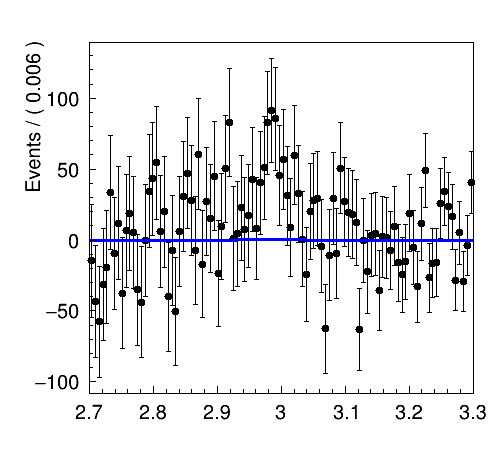
It looks like if the blue line is flat, but when you zoom in you see that it is the right pdf, but normalized wrongly:
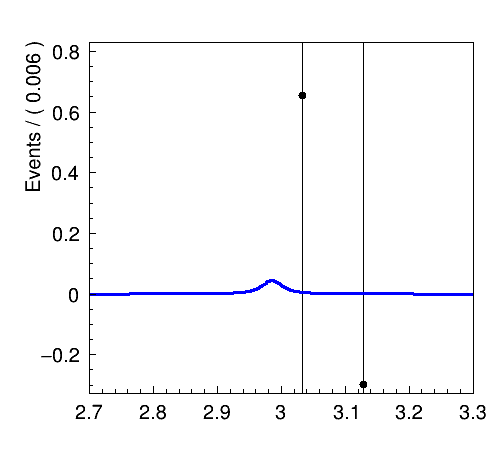
I already tried to compensate this with the option Normalization(sum_events, RooAbsReal::Relative), which scales it up but still doesn’t match the real line shape.
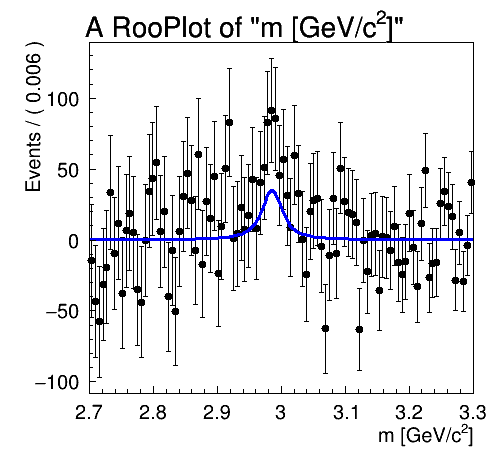
Can anybody help me with that?
Best regards and thanks,
Klaus
